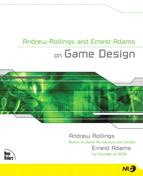Ernest W. Adams - Fundamentals of Vehicle Simulation Design
Here you can read online Ernest W. Adams - Fundamentals of Vehicle Simulation Design full text of the book (entire story) in english for free. Download pdf and epub, get meaning, cover and reviews about this ebook. City: Place of publication not identified, year: 2014, publisher: New Riders, genre: Romance novel. Description of the work, (preface) as well as reviews are available. Best literature library LitArk.com created for fans of good reading and offers a wide selection of genres:
Romance novel
Science fiction
Adventure
Detective
Science
History
Home and family
Prose
Art
Politics
Computer
Non-fiction
Religion
Business
Children
Humor
Choose a favorite category and find really read worthwhile books. Enjoy immersion in the world of imagination, feel the emotions of the characters or learn something new for yourself, make an fascinating discovery.

- Book:Fundamentals of Vehicle Simulation Design
- Author:
- Publisher:New Riders
- Genre:
- Year:2014
- City:Place of publication not identified
- Rating:4 / 5
- Favourites:Add to favourites
- Your mark:
- 80
- 1
- 2
- 3
- 4
- 5
Fundamentals of Vehicle Simulation Design: summary, description and annotation
We offer to read an annotation, description, summary or preface (depends on what the author of the book "Fundamentals of Vehicle Simulation Design" wrote himself). If you haven't found the necessary information about the book — write in the comments, we will try to find it.
Fundamentals of Vehicle Simulation Design — read online for free the complete book (whole text) full work
Below is the text of the book, divided by pages. System saving the place of the last page read, allows you to conveniently read the book "Fundamentals of Vehicle Simulation Design" online for free, without having to search again every time where you left off. Put a bookmark, and you can go to the page where you finished reading at any time.
Font size:
Interval:
Bookmark:
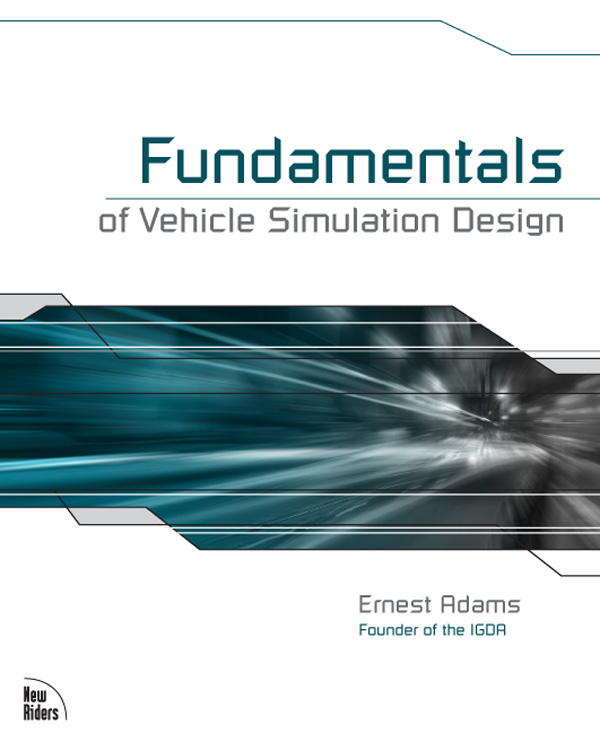
Ernest Adams
Ernest Adams is a game design consultant and part-time professor at the University of Uppsala Campus Gotland in Sweden. He lives in England and holds a Ph.D. in computer science from Teesside University for his contributions to the field of interactive storytelling. Dr. Adams has worked in the interactive entertainment industry since 1989, and he founded the International Game Developers Association in 1994. He was most recently employed as a lead designer at Bullfrog Productions, and for several years before that he was the audio/video producer on the Madden NFL line of football games at Electronic Arts. His professional website is at www.designersnotebook.com.

Ernest Adams
In this book, youll learn the definition of vehicle simulations and then explore the mechanics of various types of them. This book focuses primarily on driving and flying simulations, spending a lot of time discussing the creation of military simulations. Well also review the game environment requirements, the look and camera angles best suited for these simulations, and the behaviors of artificial opponents.
Vehicle simulations create the feeling of driving or flying a vehicle, real or imaginary. In simulations of real vehicles, one of the chief goals is verisimilitude, an (apparently!) close relationship to reality. Your players will know a lot about these machines and will want an experience that is at least visually similar to that of really controlling one. The machines performance characteristics should also be similar to reality, although its finer details probably cant be, for reasons youll learn in this book.
If youre designing an imaginary vehicle, youre free to create any kind of driving experience that you like without being restricted by the laws of physics, mechanics, or visual style. Your game really needs just to create the feeling of movement.
Vehicle simulations cover several environments and game mechanics. They can be in the air, on the ground, on water, or in space. They can include races against other players or artificially intelligent opponents, or they can involve exploration or simply the experience of using the vehicle. As mentioned, the most common element is the sense of verisimilitude: Players are looking for an experience that feels the way it would truly feel to drive, fly, or otherwise control a vehicle. Because most of us have driven cars, we have an expectation of how that feels. But most of us dont know what it feels like to drive a car at 200 miles per hour or to drive a car that has various weapons installed. Most of us have not experienced flying a plane ourselves, but we know what being in a plane feels like.
Vehicle simulations can be simple representations of a vehicle, or they can include game mechanics such as combat, racing, special challenges like skids or slaloms, and so on. Although space and water vehicle simulations also exist, they tend to follow the same fundamental features as the flying and driving simulations. Not only do the same physics generally apply, but the additional game mechanics and features are often the same.
Representational flight simulators fall into two general categories: civilian and military. Civilian flight sims dont include aerial combat; theyre mostly about the way the aircraft looks and performs, and so are often quite realistic. Military flight sims have to be simplified for reasons well look at later, but they offer exciting physical and tactical challenges. Fantasy flight simulators can be about all kinds of crazy things, such as flying on a dragon.
Driving simulators also tend to fall into two major categories: organized racing and imaginary racing. Organized racing simulators try to reproduce the experience of driving a racing car or motorcycle in an existing racing class, such as IndyCar, NASCAR, or AMA Motocross. (To use the official name and indicia of any of these racing organizations, you will need to get a license. See the section Intellectual Property Rights, later in this e-book.) Imaginary racing games are just that: games about racing in imaginary situations, driving madly through cities or the countryside or even fantasy environmentskart racing games fall into this category.
In addition to racing, many games implement driving as a part of a wider variety of activities. First-person shooters often include combat vehicles as well, and of course cars are central to the Grand Theft Auto series. These vehicles are seldom represented accurately, because the player is less concerned with their driving characteristics and more with tactical needs.
The players themselves also fall into two categories. The purists demand highly accurate simulations of real vehicles with all their quirks and limitations; if a purist forgets to retract the airplanes flaps after takeoff, he wants those flaps to be damaged by excessive airspeed and to be stuck in the down position with appropriate consequences for the planes handling characteristics. On the other hand, casual players dont care about the details as long as they can fly or drive around, preferably fast, and maybe even shoot at things or do tricks.
Naturally the players primary role in a vehicle simulation is that of its pilot or driver. However, the player may take on other roles in different gameplay modes. For example, if youre going to simulate larger aircraft such as bombers or two-seat fighters, youll have to decide how you want to handle the varying roles available. In LucasArts World War II simulator Their Finest Hour, the player can play any of the waist and tail gun positions of the Junkers Ju 88 bomber while leaving the plane on autopilot, or she can set the guns to fire automatically at any target that comes into view. To drop the bombs, however, she has to take over the bombardiers position personally. Three-Sixty Pacifics game Megafortress required the player to manage no fewer than five different stations: pilot, copilot, navigator, electronic warfare specialist, and offensive weapons officer. Each station had its own instrument panel and responsibilities, and the player had to move constantly from one to another to check on conditions and respond to emergencies. At times when the player was away from the pilots seat, the plane flew on autopilot toward the next waypoint.
In racing-oriented driving games, the players role is that of a racing driver most of the time, but the more serious simulations, such as the F1 series, also allow the player to be a mechanic, modifying the angle of the airfoils, changing tires to compensate for weather conditions, and so on.
A few vehicle simulations, such as the classic Microsoft Flight Simulator, arent really games because they dont offer the player a goal, apart from learning to control the vehicle. They dont have any rules other than the laws of physics. Most vehicle simulations, however, offer driving or flying within a competitive context, either a race or a battle of some kind.
The competition modes of military flight simulators resemble those of first- person shooters: single-player modes against artificial opponents, multiplayer death matches (every player for himself), and team-based play. Civilian flight simulators usually offer only a single-player mode, although they sometimes also allow races and follow-my-lead competitions. Driving simulators are generally single-player games or multiplayer races and are seldom team-based.
Font size:
Interval:
Bookmark:
Similar books «Fundamentals of Vehicle Simulation Design»
Look at similar books to Fundamentals of Vehicle Simulation Design. We have selected literature similar in name and meaning in the hope of providing readers with more options to find new, interesting, not yet read works.
Discussion, reviews of the book Fundamentals of Vehicle Simulation Design and just readers' own opinions. Leave your comments, write what you think about the work, its meaning or the main characters. Specify what exactly you liked and what you didn't like, and why you think so.

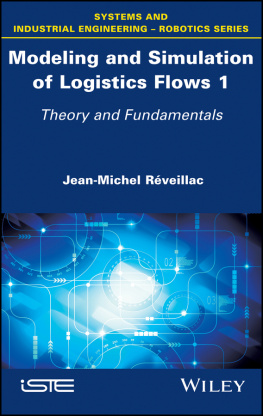
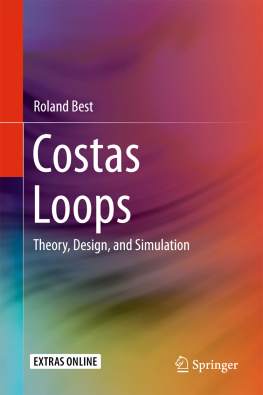
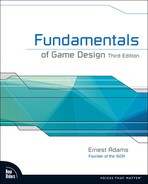
![Ernest Adams [Ernest Adams] - Fundamentals of Adventure Game Design](/uploads/posts/book/119415/thumbs/ernest-adams-ernest-adams-fundamentals-of.jpg)
